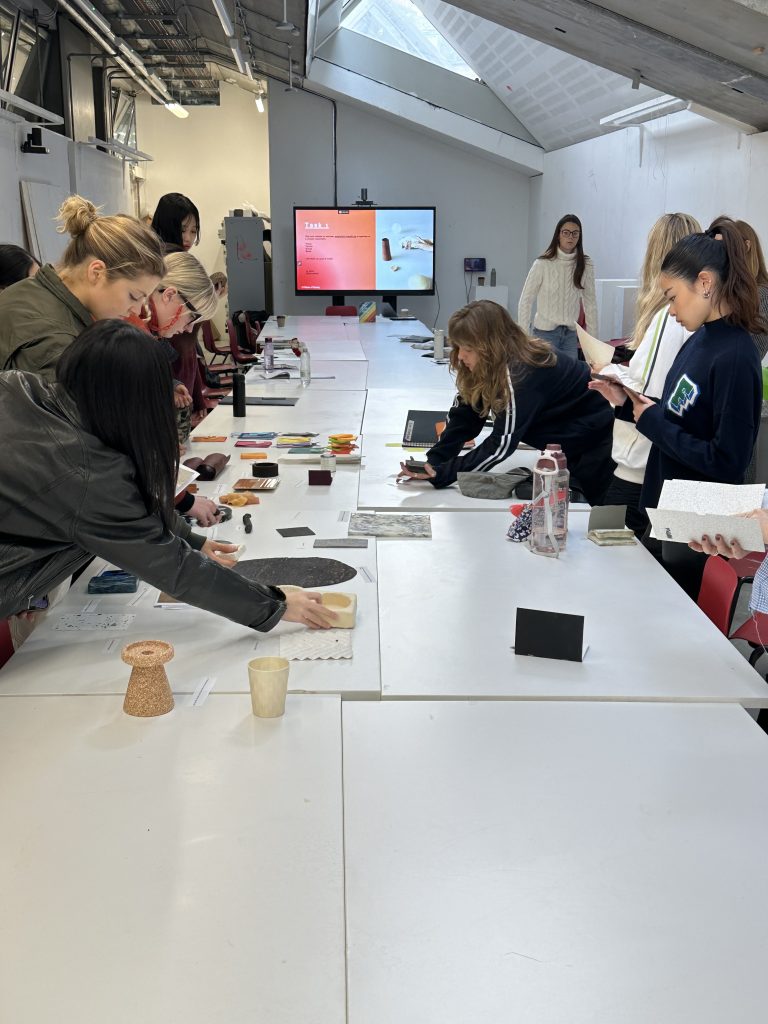Introduction & Background

I started my academic teaching career as an Associate/Visiting Practitioner (AL/VP) on BA (Hons) courses within UAL. I worked as an AL/VP for 5 years and have now employed as a contracted academic (Year 2 leader/Senior Lecturer BA textile design) for the last 5 years, running studio- based group learning activities as well as one-two-one tutorials. The student cohort at Chelsea is very diverse in terms of their cultural and social economic background, but also their creative educational experience prior to starting a BA. Some students come straight from High school creative education and some from an art foundation course, of course a growing number of students with diagnosed neurodiversity needs and also students from a variety of international schooling systems. All these varied pathways with differing resources and approaches culminate in a very diverse cohort with different levels of initial ability and understanding of the basic creative processes which presents a challenge when creating projects/workshops that will engage and challenge all.
Evaluation
– One -to -One Tutorials where I discuss individual students project progression.
– Group Tutorials where we discuss students’ project progression.
– Group ‘Show & Tell’ studio sessions where students share and practice presenting their project progression, encourage them to articulate and communicate to one another positive and productive feedback on how to move forward with their perspective project work.
In all these cases, there are challenges in terms of knowing and meeting the needs of diverse learners.
– Students’ confidence levels in speaking English when it isn’t their first language. Confidence in speaking English in a group environment.
– Students who have anxiety around presentations/public speaking.
– Social anxiety, neurodiversity within the group settings, feeling ‘put on the spot’.
Moving Forward
“Provocation 1: Might the pressure to actively participate actually be counter-productive? In the physical classroom, I have seen students freeze in terror when a question is fired at them. The sheer demand to contribute on tap – to simultaneously process the question, conceptualise an intellectually coherent response, and find the vocabulary and syntactical structure with which to deliver that response – can simply be too great an ask. And who can blame these students?” (Weeks, 2018).
Moving forward from my learnings I will try to mitigate these challenges by adopting the following.
- In the one-to-one tutorials I will try to focus more on developing a better understanding of the diverse backgrounds, abilities, and interests of my students. Endeavour to get a deeper understanding of their learning preferences to gain more knowledge about their perceived areas of strength and weaknesses, as well as studio scenarios they may find challenging.
- Get the student to complete a questionnaire regarding their learning and delivery preferences prior to ‘Show &Tell’ sessions. This will enable me to ascertain knowledge about the students’ diverse backgrounds, abilities, and interests and facilitate my teaching to accommodate their needs by providing the most appropriate platform for them.
- Create opportunities for ‘live’ written feedback to student peers being exchanged in ‘Show & Tell’ sessions.
- ‘Post it’ notes
- Live Padlet post within the session.
- Communal mind map creation within the session.
- Question prompts – put question prompts in a bag and ask students who cannot think of any questions/ feedback to pick out of the bag.
References
(Embracing the silence: Introverted learning and the online classroom, (Weeks, 2018)